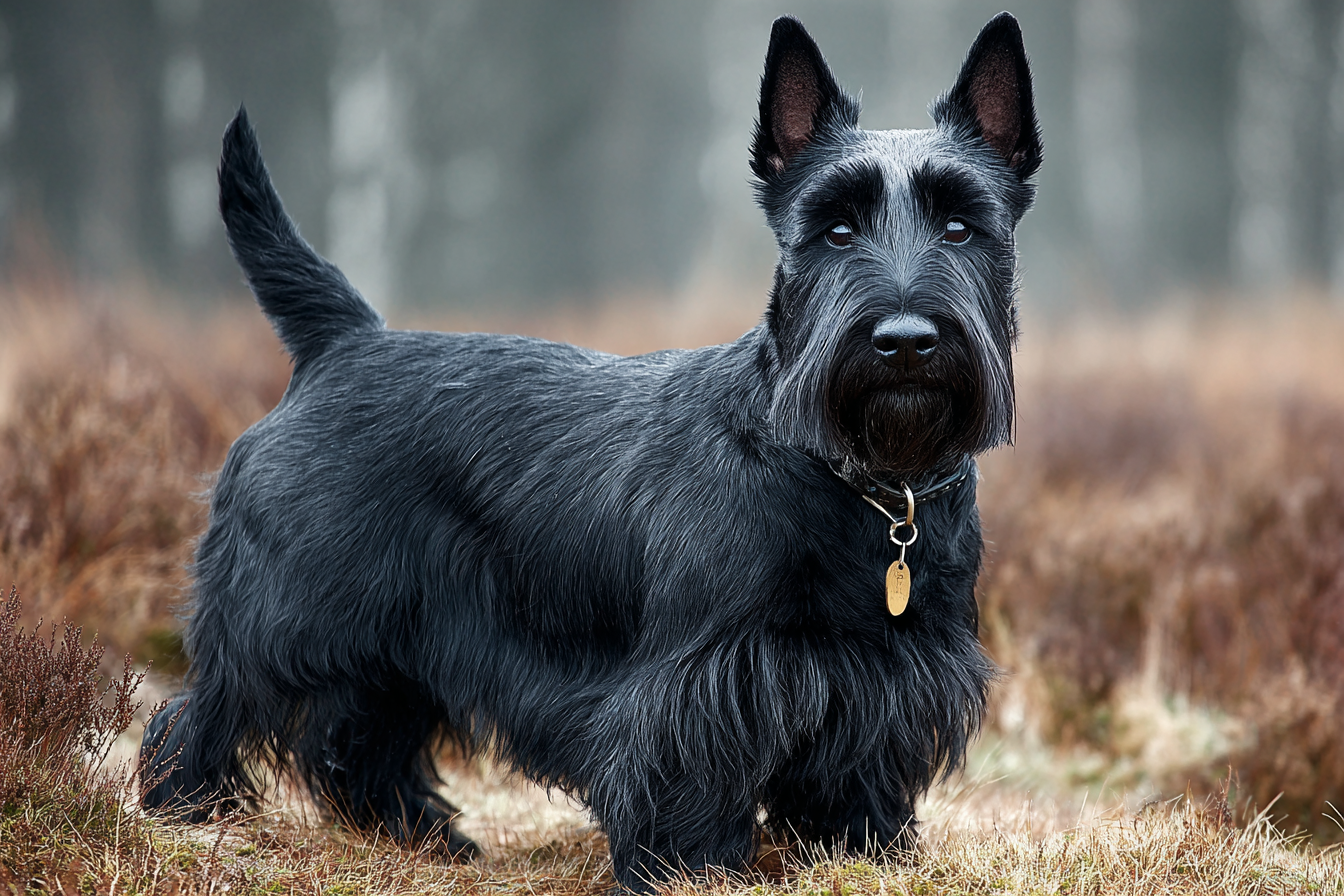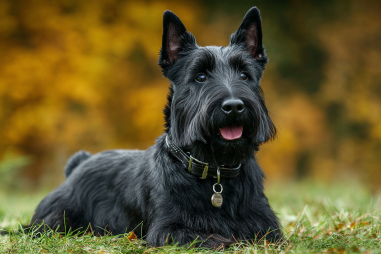When considering adding a new furry friend to your family, understanding the breed characteristics of the Scottish Terrier can make all the difference. Known for their distinct look and spirited personality, Scotties are much more than just adorable faces. Getting familiar with their physical features, temperament, energy levels, and health needs ensures that both you and your new companion have a happy and harmonious life together. Let’s take a closer look at what to expect from this unique and charming breed.
Physical Appearance and Size
Scottish Terriers, often affectionately called Scotties, boast a striking appearance that’s hard to miss. They have a compact, sturdy build with a distinctive rectangular body shape. Typically, a full-grown Scottie stands about 10 inches tall at the shoulder and weighs between 18 and 22 pounds. This small but rugged frame gives them an air of confidence and determination.
Their head is one of their most recognizable features, with a long, pronounced muzzle and expressive, dark almond-shaped eyes that project intelligence and alertness. The erect ears, pointed and well set on the head, add to their keen and attentive look. Additionally, their short legs and deep chest give them a balanced stance, perfect for their original role as daring and agile hunting terriers.
Coat and Color Variations
The Scottish Terrier’s double coat is both functional and characteristic. The outer coat is tough and wiry, designed to protect them from harsh weather, while the undercoat is soft and dense, offering insulation. This combination creates a texture that is distinctively rugged to the touch.
Proper grooming is essential for maintaining their signature look, which typically includes a longer beard around the muzzle and longer hair on the legs contrasted with a shorter body coat. Regular brushing and occasional trimming help keep their coat in prime condition and prevent matting.
When it comes to color, Scotties are most commonly seen in:
- Black
- Brindle (a streaked or striped pattern blending black and brown)
- wheaten (a pale yellow or cream shade)
All these colors are recognized and celebrated within breed standards, and they contribute to the distinct appearance that sets the Scottish Terrier apart.
Behavioral Traits
Scottish Terriers have a reputation for their bold and confident personality. Don’t let their small size fool you—they carry themselves with a noble and sometimes stubborn demeanor. They are independent thinkers, which can sometimes translate to a bit of a willful streak. However, they are also deeply loyal and devoted to their family members.
Scotties are known to be territorial and protective, making them good watchdogs. They are alert and will sound the alarm if a stranger approaches or when unusual sounds occur. Socialization from an early age is important so that they learn appropriate interactions with people and other pets.
While they have a dignified attitude, Scottish Terriers can also be playful and enjoy engaging activities with their humans. They develop strong bonds but may display reserved behavior with those outside their immediate circle.
Energy Level and Activity Patterns
Despite their somewhat serious nature, Scottish Terriers have a moderate energy level. They enjoy daily walks and some playtime, but they’re not hyperactive dogs demanding continuous high doses of exercise. Their original working dog heritage means they benefit from mental stimulation in addition to physical activity.
Scotties appreciate opportunities to explore and follow their natural instincts to dig and sniff around, so providing them with a safe, accessible outdoor area can keep them content. They also enjoy interactive toys and learning new tricks, which can stimulate their intelligent minds.
Overall, they fit well into homes where activity is balanced—energetic enough for play, but with plenty of downtime for relaxing.
Health Implications of Breed Traits
Like all breeds, Scottish Terriers have certain health considerations prospective owners should be aware of. Thanks to responsible breeding, many Scotties are healthy and long-lived, often living between 12 to 15 years. However, some breed-specific health issues do exist.
Common concerns include:
- Von Willebrand’s Disease: A blood clotting disorder that can cause excessive bleeding.
- Scottie Cramp: A neurological disorder that affects muscle coordination, usually noticeable during excitement or exercise but not painful.
- Hypothyroidism: An underactive thyroid gland, which can affect metabolism and energy levels.
- Bladder cancer: Higher prevalence in Scotties compared to other breeds, so regular vet checks and monitoring are important.
Regular veterinary care, a balanced diet, and adequate exercise contribute significantly to overall health. Early detection and management of any conditions help keep your Scottie happy and thriving.
Suitability for Families and Lifestyles
The Scottish Terrier makes a wonderful companion for a range of households, but they do have specific needs worth considering to ensure a good fit.
They tend to do well with adults and older children who understand how to interact with a smaller, sometimes sensitive dog. Their independent nature means they don’t always enjoy nonstop handling or rough play, so younger children should be taught respectful boundaries.
Scotties thrive in homes where they get consistent attention and mental engagement. They adapt well to apartment living as long as their daily exercise needs are met, but they also enjoy suburban or rural environments with space to roam safely.
If you’re looking for a devoted, alert companion with a bold personality and a bit of a stubborn streak, the Scottie could be an excellent match. They are relatively low-maintenance in terms of exercise but do require regular grooming and socialization.
Finding the Perfect Place for Your Scottie
Bringing a Scottish Terrier into your life means welcoming a dog with a strong will, a loving heart, and a timeless charm. Ensuring that your lifestyle and living environment align with their breed characteristics is key to a rewarding relationship. Their beautiful appearance combined with their spirited personality creates a unique and unforgettable companion.
By understanding and embracing the physical traits, temperament, energy needs, and potential health considerations of the Scottish Terrier, you’ll be well-prepared to provide a loving home where your Scottie can truly thrive.







